Onion Chutney, also known as Vengaya Chutney, is a spicy, tangy South Indian condiment made by sautéing onions with garlic, dried red chilies, tamarind, and spices, then blending them into a smooth, flavorful paste. Typically finished with a tempering of mustard seeds, curry leaves, and asafoetida, this chutney is a bold, aromatic alternative to coconut chutney and pairs wonderfully with South Indian snacks like Idli, Dosa, Rava Idli, and Medu Vada.
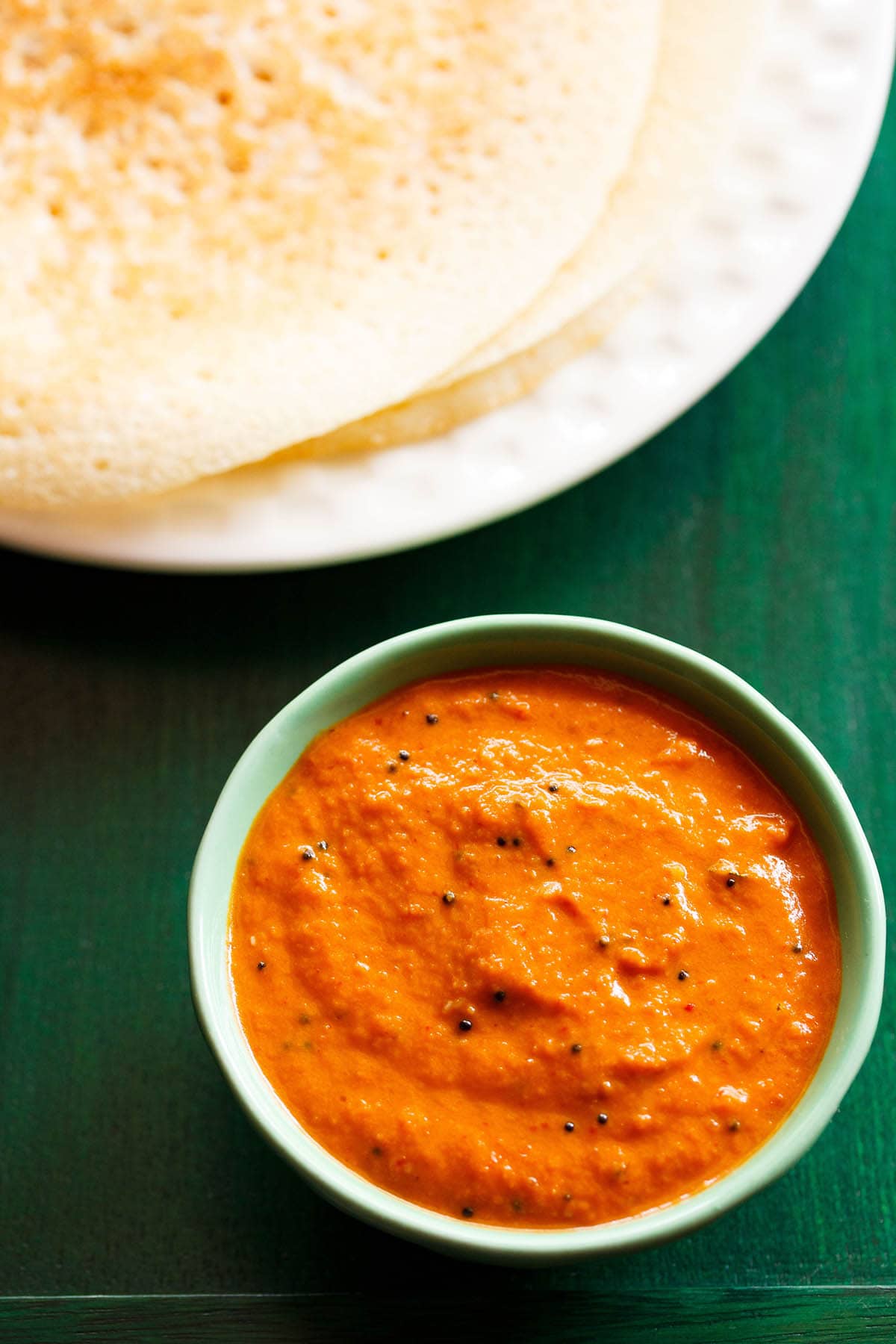

About Onion Chutney
This recipe of Onion Chutney is a South Indian style of making it. ‘Vengaya’ is the Tamil word for ‘onion.’ Thus, this recipe is also rightly referred to as Vengaya Chutney.
Made with plant-based ingredients, this Onion Chutney is one of the easiest and quickest side dishes you can prepare at home, and it is naturally vegan too.
Along with onions, this Vengaya Chutney from Tamil Nadu uses garlic, dried red chilies, chana dal, urad dal, asafoetida (hing), curry leaves, tamarind, salt, and oil, with the chilies lending a beautiful orangish hue to the chutney.
For the best and most authentic flavor, it is ideal to use sesame oil when making this Onion Chutney. However, if unavailable, you can easily substitute it with sunflower oil or peanut oil.
The preparation of Vengaya Chutney is simple: first, the lentils, dried red chilies, onions, and garlic are sautéed; then blended into a smooth paste with water as needed; and finally tempered with aromatics and spices before serving.
Why This Recipe Works
This Onion Chutney offers a beautiful medley of flavors. Tamarind brings a subtle tartness, dried red chilies lend a hint of smokiness, garlic adds a mild pungency, lightly browned onions contribute a natural sweetness, and the sautéed lentils infuse a delicious earthy depth to the chutney.
If you are wondering which variety of onions works best for this Vengaya Chutney, you can use red onions, yellow onions, white onions, pearl onions, or even shallots – all work beautifully.
The color of this Vengaya Chutney can vary depending on the type of red chilies used. I prefer using Kashmiri red chilies for their vibrant color and mild heat, but you can also opt for Byadagi red chilies, another Indian variety known for their rich color and gentle heat.
Bursting with flavors, this Onion Chutney pairs wonderfully with South Indian tiffin snacks like rava idli, masala dosa, and uttapam. Occasionally, I also enjoy it with Poha Dosa – as you can see in the picture above.
Step-by-Step Guide
How to make Onion Chutney
Fry Lentils & Red Chillies
1. Heat 2 teaspoons of oil in a pan. Lower the heat and add 1 teaspoon chana dal (husked and split Bengal gram). Then, add ½ teaspoon urad dal (split and husked black gram).
Tip: You can use sunflower oil, peanut oil, gingelly oil (oil made from raw sesame seeds) or any neutral oil.
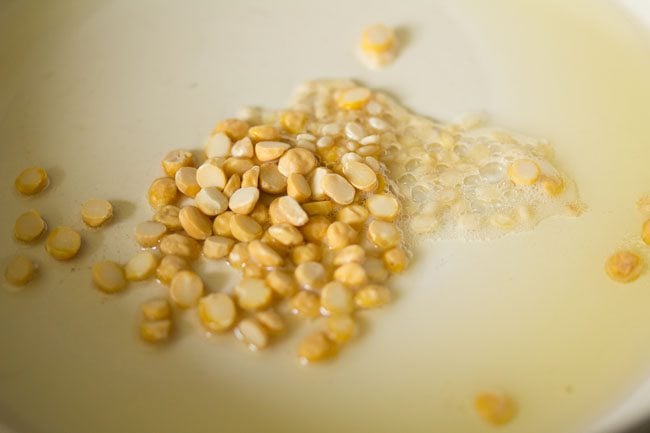

2. Fry, stirring often, until the lentils turn golden. Do not burn them.
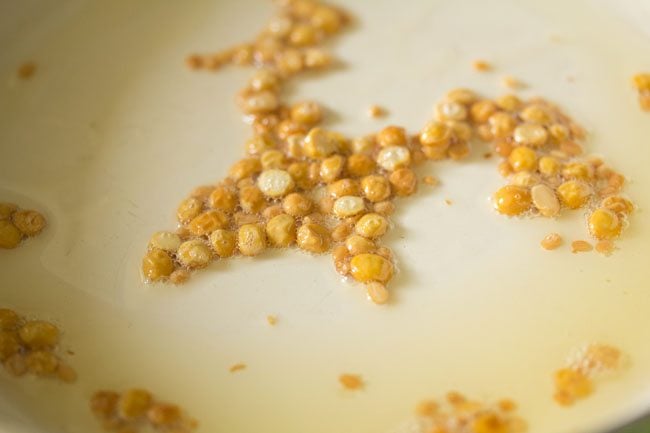

3. Then, add 2 to 3 Kashmiri dried red chilies (broken or halved and seeds removed). Stir and fry for some seconds till you see the chilies change color and turn fragrant.
Fry on a low heat, so that the chilies do not get burnt. Kashmiri red chilies give a nice color and are not too spicy.
You can also opt to use byadagi red chilies. If you are using medium hot or very hot red chilies, then add less of these.
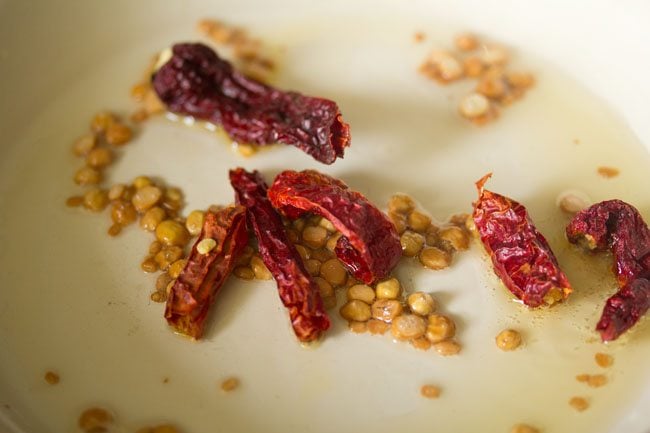

Sauté Onions & Blend
4. Add 1 cup chopped onions and ¼ to ½ chopped garlic (1 to 2 small or medium garlic cloves). You can also use pearl onions or shallots, instead of regular onions.
Red onions, white onions or yellow onions – all work well in the recipe.
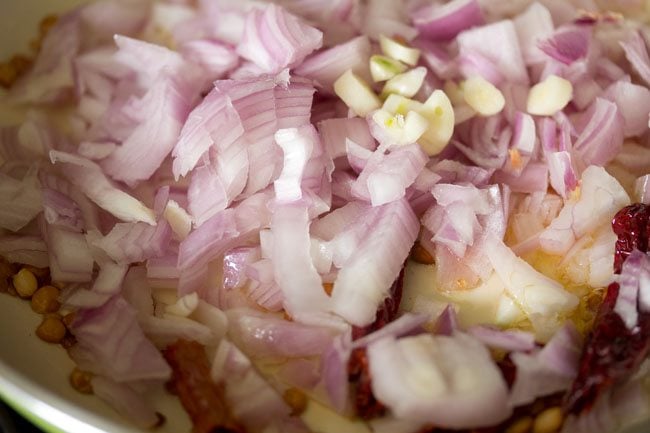

5. Sauté onions on low to medium heat and stir continuously.
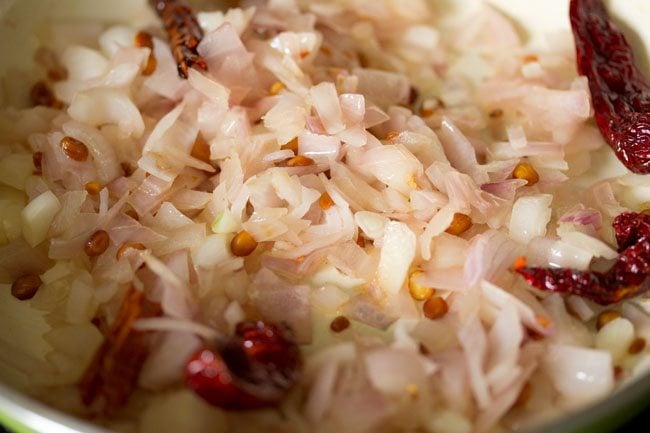

6. Sauté until the onions turn light golden. Then, switch off the heat and let the onions cool at room temperature.
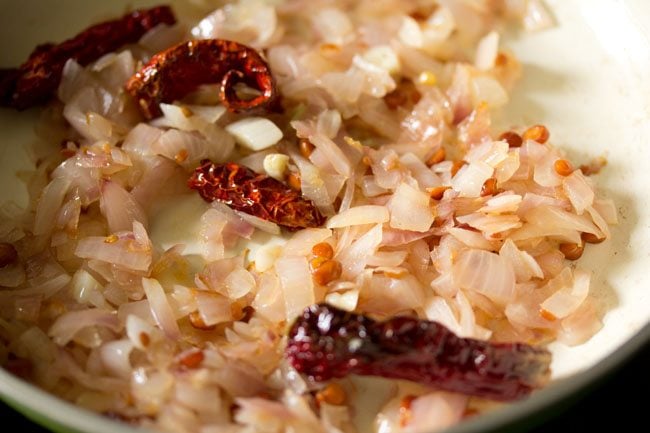

7. Next, transfer the entire sautéed mixture into a mixer-grinder or a small blender. Add ¼ teaspoon dried tamarind and salt to taste.
If you do not have dried tamarind that we easily get in India, add ⅛ teaspoon bottled or packaged tamarind sauce or as needed.
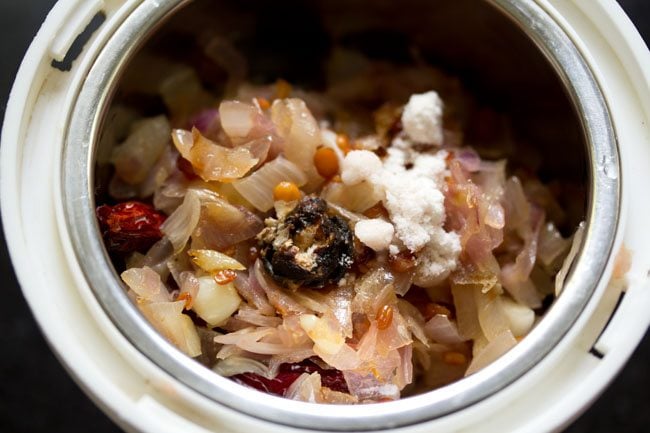

8. Add ¼ cup water and grind ingredients into a smooth and fine chutney. Set aside for later.
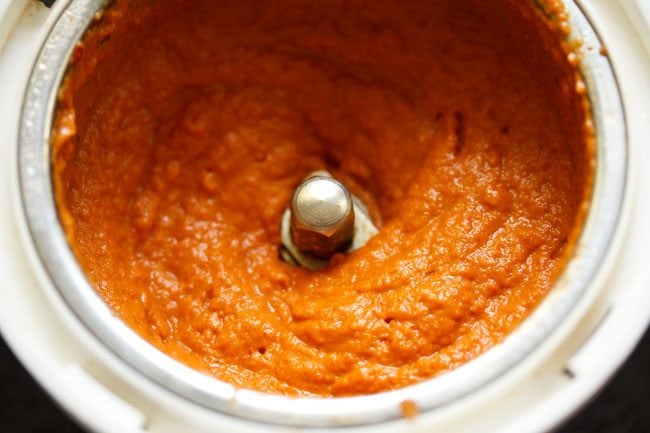

Make Onion Chutney
9. Heat 2 teaspoons oil on low flame in the same pan. Add ½ teaspoon mustard seeds and cook them until they start to crackle.
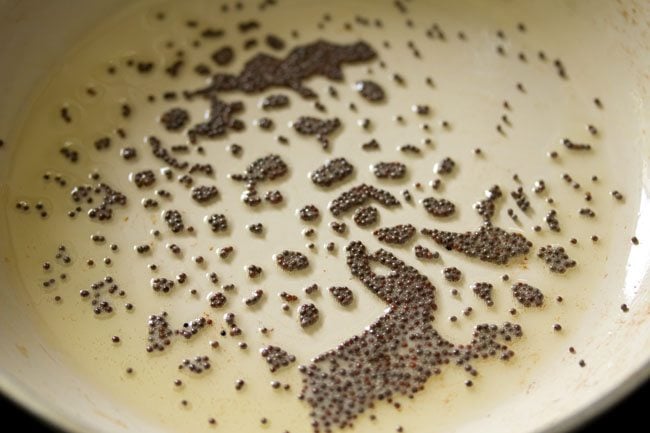

10. Once the mustard seeds start crackling, add a pinch of asafoetida (hing) and 5 to 6 curry leaves.
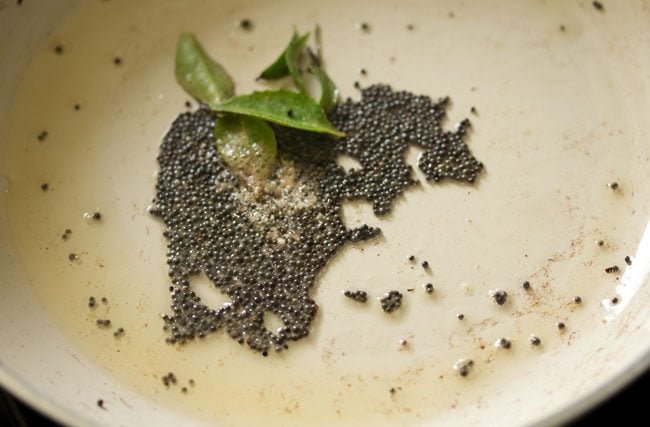

11. Fry for a few seconds or until the curry leaves become crisp.
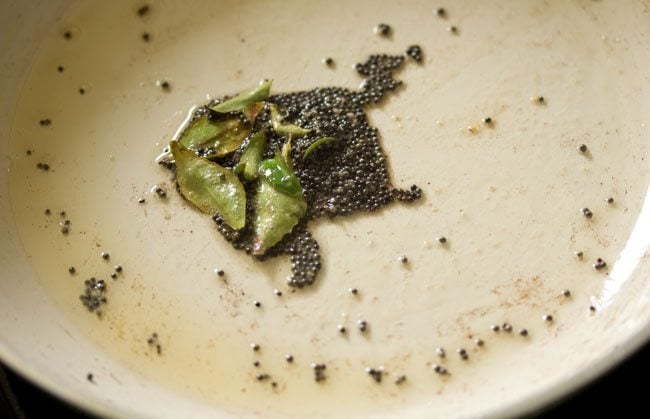

12. Keep the heat to low and add the prepared onion chutney.
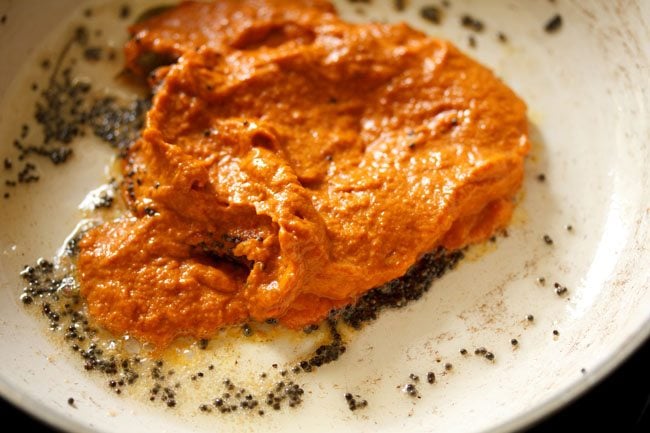

13. Mix it with the tempering ingredients.
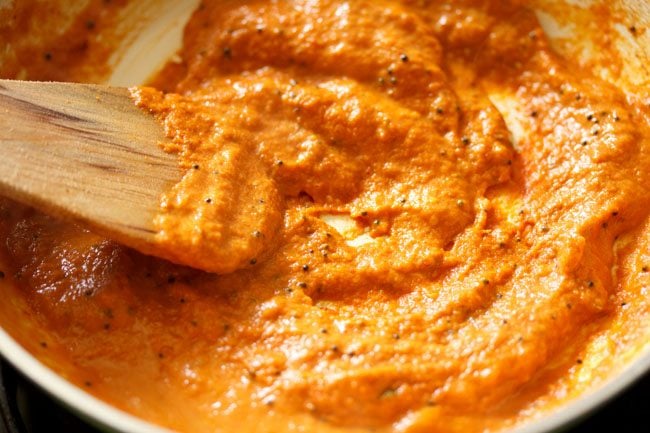

14. Add ¼ to ⅓ cup water. I poured water to the blender jar, swirled it around and added the water into the pan.
This ensures that leftover chutney sticking on the walls of the jar is not wasted. You can alter the consistency of the chutney by adding less or more water.
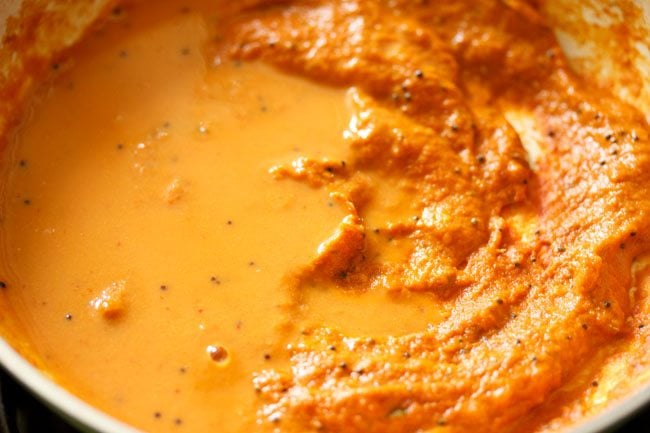

15. Mix very well and switch off the heat. Do a taste test and add more salt if needed.
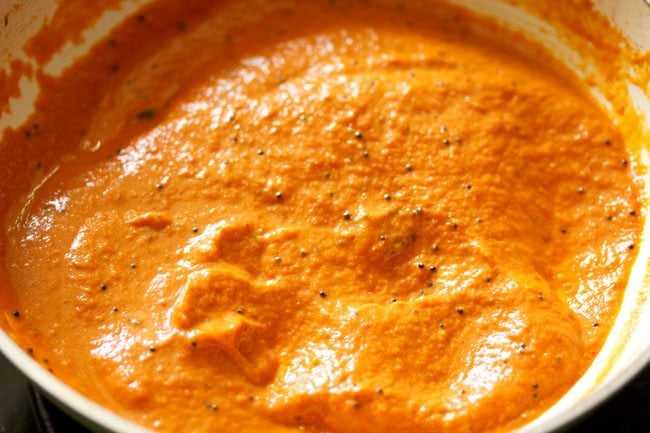

16. Serve Onion Chutney with your favorite dosa, idli, medu vada or any pakoda varieties.
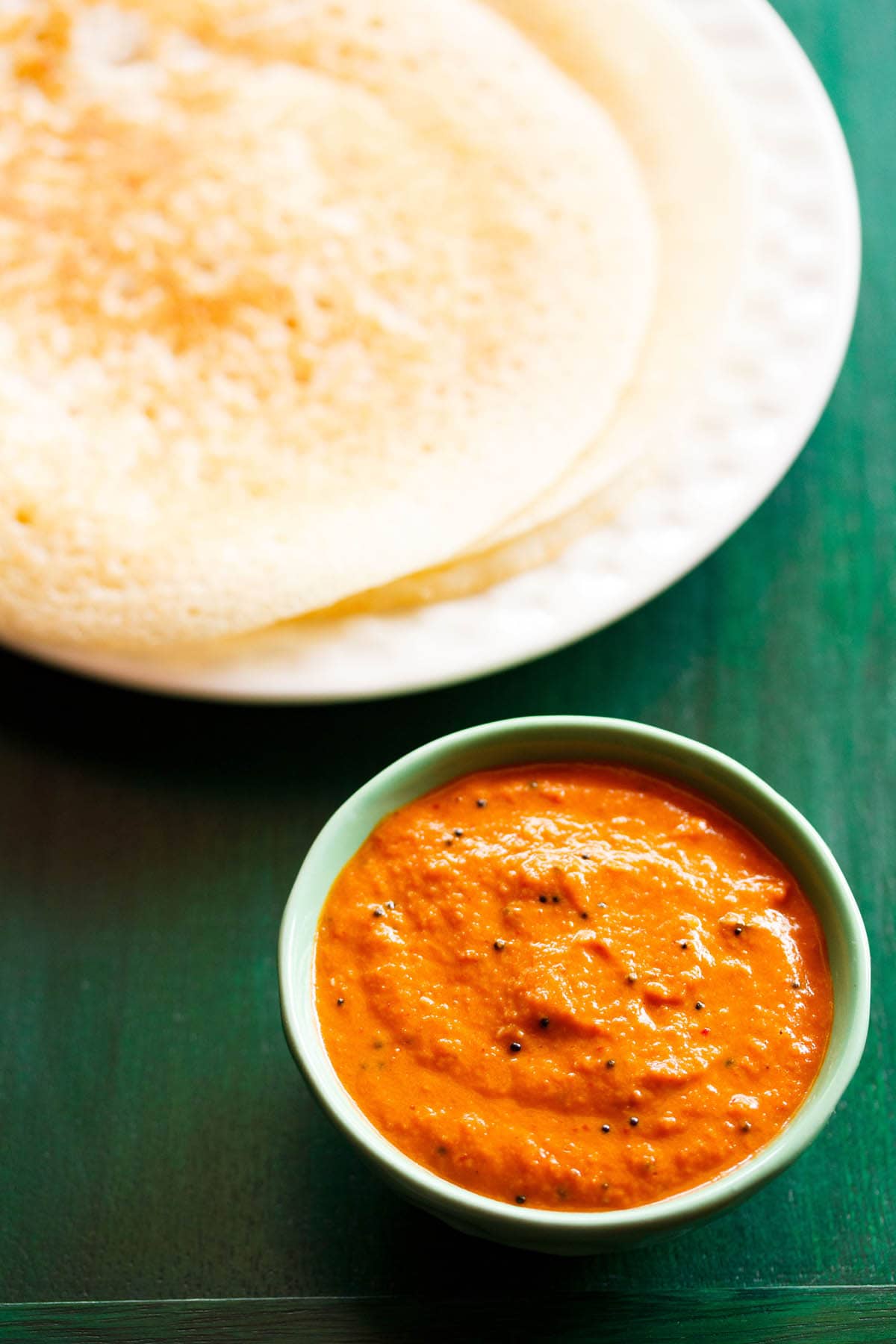

Serving Suggestions
- Serve this tasty Onion Chutney with snacks like idli, Uttapam or dosa.
- Pairs beautifully with rava dosa, Neer Dosa, or Set Dosa.
- Enjoy it with medu vada or Dal Vada.
- Spread it inside masala dosa or Cheese Dosa or Paneer Dosa for an extra burst of flavor.
- Pair it as a dip with pakoda varieties like Onion Pakoda, Potato Bajji or Paneer Pakora.
- Slather some chutney on toasted bread for a quick, flavorful snack.
- Serve it with Idiyappam (string hoppers) or Appam.
- Use as a side dip with Pesarattu (Moong Dal Dosa).
- Enjoy alongside hot steamed rice with a drizzle of ghee for a comforting meal.
- Can be enjoyed with chapati or paratha as a simple, satisfying spread.
- Add as a tangy spread inside sandwiches or wraps for a fusion twist.
Storage Suggestions
Store any leftovers of the Onion Chutney in a covered container or an airtight jar in the refrigerator for 1 to 2 days. I do not recommend making a large batch ahead, as the chutney tastes best when freshly prepared.
Always use a clean, dry spoon when serving to maintain freshness and avoid contamination.
Before serving, you can let the chutney come to room temperature or warm it slightly if preferred. I would also not suggest freezing this chutney, as it can alter the flavor and texture.
Expert Tips
- Onions: This chutney can be made with different types of onions such as red, white, yellow onions, as well as shallots and pearl onions. However, scallions (spring onions) are not suitable for this recipe.
- Spiciness: Adjust the heat and pungency of the chutney by using fewer red chilies or opting for less to medium-hot varieties. If very spicy chilies are used, the chutney can turn quite fiery. I prefer using Kashmiri red chilies, as they are mild and lend a lovely orange color to the chutney.
- Sourness: Tamarind adds a pleasant tang to the chutney. If you do not have tamarind, you can substitute it with lemon juice. However, the flavor will be slightly different.
- Nuts: You can add some roasted, unsalted peanuts for extra richness. Add them when the onions turn light golden and sauté for a minute. Once cooled, blend everything with water to a smooth consistency.
- Consistency: Adjust the consistency of the chutney to your preference. Add less water for a thicker chutney and more water for a medium-thin consistency. Avoid adding too much water, as it can dilute the flavors.
- Choice of Fat: Gingelly oil (oil made from raw sesame seeds) gives the most authentic flavor, but you can also use sunflower oil, peanut oil, or any neutral-flavored oil.
- Scaling: The recipe can be easily doubled or tripled to make a larger batch for potlucks, parties, or small gatherings.
FAQs
I use the Preethi Mixer Grinder Blue Leaf model. It does a great job of grinding chutneys as well as making batter for idli, dosa, and medu vada.
Yes, you can add roasted peanuts for extra flavor. They blend well with the sautéed onions and enhance the taste of the chutney.
You can refrigerate the chutney in an airtight container for 1 to 2 days. Let it come to room temperature before serving.
Tempering adds a lot of flavor and aroma, but you can skip it if short on time. The chutney will still taste good, though slightly less aromatic.
It is not recommended to freeze onion chutney, as freezing can alter its texture and flavor. It tastes best when freshly made or stored for a day or two in the refrigerator.
Yes, onion chutney can be naturally gluten-free if you use pure, gluten-free asafoetida (hing). Check the label to ensure there are no wheat additives.
More Chutney Recipes To Try!
Please be sure to rate the recipe in the recipe card or leave a comment below if you have made it. For more vegetarian inspirations, Sign Up for my emails or follow me on Instagram, Youtube, Facebook, Pinterest or Twitter.
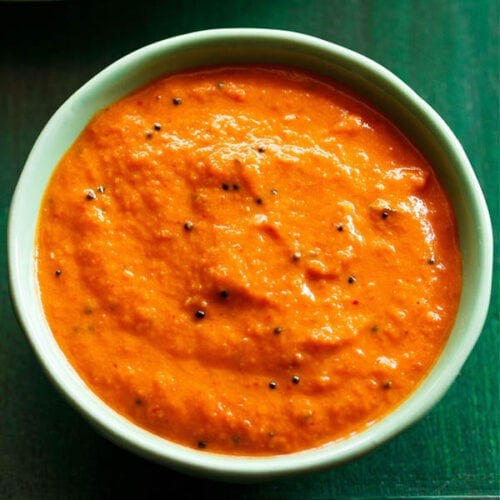

Onion Chutney Recipe (Tamil Nadu Style)
Onion Chutney or Vengaya Chutney is a spicy and tangy South Indian condiment made by sautéing onions with garlic, dried red chilies, tamarind, and spices, then blending them into a smooth, flavorful paste. Typically tempered with mustard seeds, curry leaves, and asafoetida, this chutney pairs perfectly with dosa, idli, medu vada, and uttapam, adding a bold and aromatic flavor to every bite.
Prep Time 5 minutes
Cook Time 15 minutes
Total Time 20 minutes
Prevent your screen from going dark while making the recipe
Frying lentils and red chillies
Heat oil in a pan. Lower the heat and add chana dal and urad dal.
Fry stirring regularly until the lentils turn golden. Take care that you do not burn them.
Next add the kashmiri red chilies. Fry for some seconds until you see the chilies change color and become aromatic.
Fry on a low heat, so that the chilies do not get burnt. Kashmiri red chilies give a nice color and do not make the chutney spicy.
Sauteing onions
Next add the chopped onions and chopped garlic.
Mix the onions and begin to saute on a low to medium heat. Keep on stirring onions while sauteing them.
Sauté until the onions turn a light golden. Switch off the heat and let the onions become warm or cool down at room temperature.
Transfer the entire onion mixture in a small blender or mixer-grinder. Add tamarind and salt as per taste.
Add water and blend to a smooth paste. Set aside.
Tempering Spices
Heat in the same pan or a tadka pan. Keep the heat to a low. Add mustard seeds and let them crackle.
Once the mustard seeds begin to crackle, add a pinch of asafoetida (hing) and curry leaves.
Fry for a few seconds until the curry leaves become crisp.
Making Onion Chutney
Keep the heat to a low or sim and now add the ground onion chutney.
Mix the chutney thoroughly with the tempered ingredients.
Add water. You can make this chutney slightly thick or of medium consistency by adding less or more water.
Mix very well and then turn off the heat.
Transfer chutney to a serving bowl.
Serving Suggestions
Serve Onion Chutney with idli, dosa, rava dosa, medu vada, pakoda, or as a spread on toasted bread, sandwiches, or wraps.
- Use mild red chilies like Kashmiri or Byadagi for vibrant color and less heat.
- Adjust water for a thicker or thinner chutney as you prefer.
- Gingelly oil (raw sesame oil) gives the most authentic Tamil Nadu flavor.
- Serve fresh or refrigerate for up to 1 to 2 days in an airtight container.
- Opt to use small onions (shallots) for a sweeter and more traditional flavor.
- Always sauté the lentils till golden for a deeper, nutty aroma.
- Remember to cool the sautéed mixture before blending to avoid splattering.
- Use tamarind sparingly; too much can overpower the chutney.
- Tempering enhances flavor but can be skipped if in a hurry.
- Blend to a smooth or slightly coarse texture depending on preference.
- For a no-garlic version, simply skip garlic without replacing it.
- Recipe can be scaled up to make for more servings.
Nutrition Facts
Onion Chutney Recipe (Tamil Nadu Style)
Amount Per Serving
Calories 117 Calories from Fat 81
% Daily Value*
Fat 9g14%
Saturated Fat 1g6%
Sodium 588mg26%
Potassium 109mg3%
Carbohydrates 9g3%
Fiber 2g8%
Sugar 3g3%
Protein 2g4%
Vitamin A 230IU5%
Vitamin B1 (Thiamine) 1mg67%
Vitamin B2 (Riboflavin) 1mg59%
Vitamin B3 (Niacin) 29mg145%
Vitamin B6 1mg50%
Vitamin C 55mg67%
Vitamin E 3mg20%
Vitamin K 1µg1%
Calcium 39mg4%
Vitamin B9 (Folate) 306µg77%
Iron 1mg6%
Magnesium 11mg3%
Phosphorus 27mg3%
Zinc 1mg7%
* Percent Daily Values are based on a 2000 calorie diet.
Onion Chutney recipe from the blog archives was first published on July 2016.
Source link












Leave a Reply